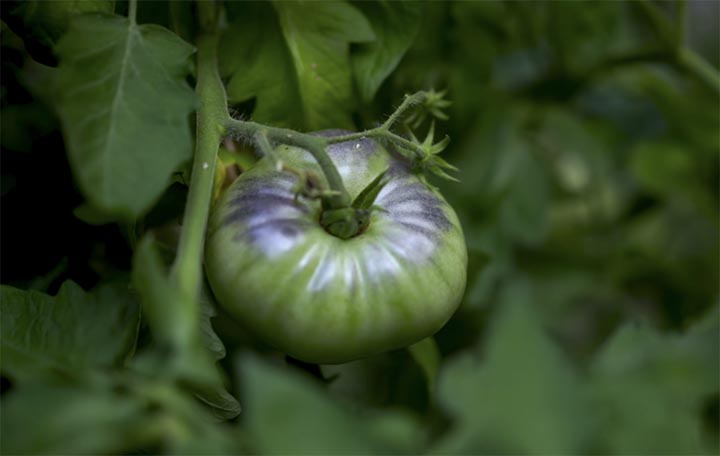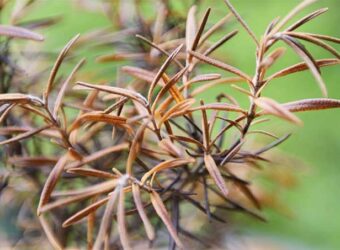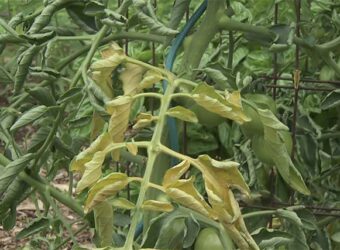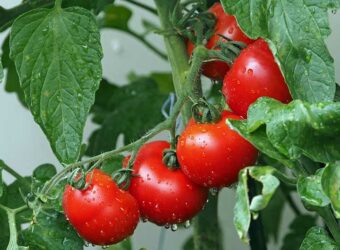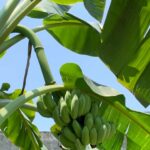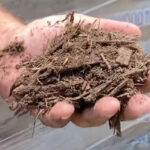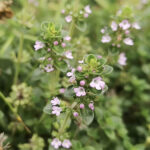Homegrown tomatoes taste much better than the bland store-bought version. I have found tomatoes are not hard to grow but do need lots of fertilizer to grow big, juicy tomatoes. You may wonder, “How do I make my own tomato fertilizer?”
There are lots of recipes for homemade tomato fertilizers on the internet. I have collected a few of the best recipes here for you.
Best Homemade Tomato Fertilizer
The best homemade tomato fertilizer supplies nitrogen and calcium when the tomatoes are transplanted outdoors. Recipes one and two are what I use at this point. When the blooms begin, and the first tomatoes are one inch in diameter, I mix up recipes three and four. These are low in nitrogen and higher in phosphorous and potassium. I use these last two recipes until the tomato vines stop bearing tomatoes.
What Fertilizer Does
Plants need nutrients the same way we do. Vegetables need a lot of water and nutrients to produce the wonderful vegetables we eat. I have found that most soils do not have enough nutrients to meet the needs of vegetable plants. Because tomatoes need large quantities of nutrients, I fertilize them many times throughout their growth. Fertilizers give tomatoes the nutrients they need to make big, juicy tomatoes.
Crucial Ingredients in Fertilizer
Tomato plants need large amounts of nitrogen, phosphorous, and potassium. They need smaller amounts of calcium, magnesium, and sulfur and trace amounts of iron, manganese, zinc, copper, boron, and molybdenum. For a more in-depth discussion of what each element does, see my article about tomato fertilizer.
When to Fertilize
Tomatoes need fertilizer at four specific points, and the major nutrients they need change with each stage.
As Seedlings
I start my tomato plants from seed, so I have a wider choice of tomato varieties., I start fertilizing the seedlings when they have their first true leaves. I use a weak solution of liquid fertilizer so I do not burn the tender seedlings. The fertilizer should be heavy on nitrogen but contain some phosphorous and potassium. I fertilize every two weeks until I transplant the tomatoes into the ground.
When Planting Outside
Before planting my tomatoes, I do one of two things: 1) spread fertilizer around the area I will put my plants and mix it in the first three inches of soil; 2) put fertilizer in the hole I dig to put the transplant in, then cover the fertilizer with 1/2 inch of soil before putting in the tomato plant. In either case, I water the area well to activate the fertilizer. At this stage, tomatoes primarily need nitrogen.
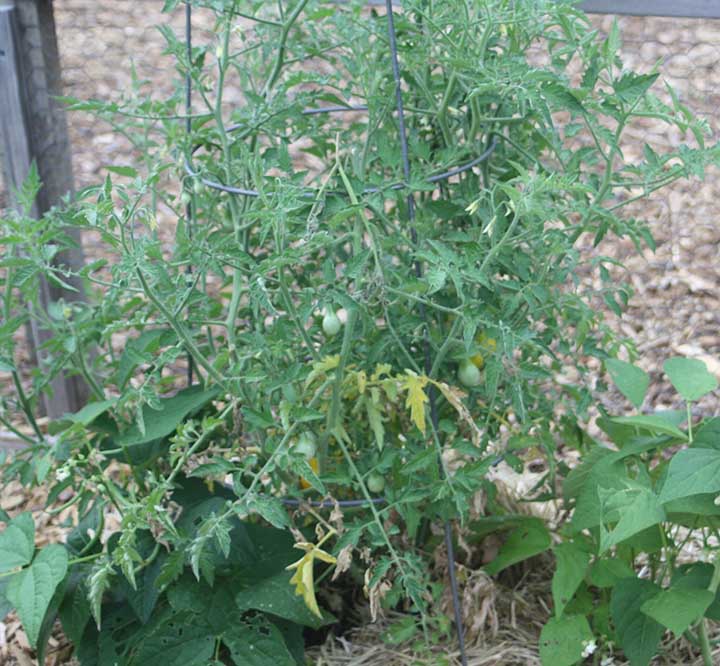
For those who want to know about tomato plant spacing, read another article from me about how far apart do I plant tomatoes?
Fruit Set
When the first tomatoes are one inch in diameter, I apply fertilizer around the plants. I always make sure the fertilizer does not touch the tomato plants so it does not burn them. I then water the fertilizer in well. Here, the tomato plants need phosphorus for blooms and fruit set.
Maintenance Fertilizer
Two weeks after I fertilize at fruit set, I start fertilizing again. I fertilize every two to four weeks until the tomato plants stop bearing fruit. The fertilizer needs to have a little nitrogen and lots of phosphorus and potassium. I also make sure there is lots of calcium to prevent blossom end rot.
Top 15 Ingredients for Homemade Fertilizer
There are several ingredients I use in my homemade fertilizer. Here are the most common and how I prepare them.
Eggshells
Eggshells are a good source of calcium. If tomatoes do not get enough calcium, they get blossom end rot. This is a rotten hole at the bottom of the tomato which can spread to engulf the entire tomato. There is nothing more frustrating than to watch a beautiful tomato suddenly start rotting.
Research has shown eggshells have to be ground into a powder to make the calcium available to the tomato plants. Just crushing them won’t work. After I use the eggs, I rinse the eggshells out. I then spread them out to dry on newspaper or something similar. Once they are dry, I use a mortar and pestle, and I grind the shells into a fine powder.
Worm Castings
Worm castings are a good source of nitrogen. They can be used as a dry ingredient or soaked in water to form a liquid nitrogen fertilizer. I don’t grow earthworms, but you can buy the worm castings from different places.
Fish Parts
You can use whole fish, fish scraps, or fish bones as part of your fertilizer. Many people put these in the hole before they plant the tomato seedlings. I have pureed the fish parts in a blender with water to make a fish emulsion. I warn you that fish smells, so mix this outside and use what you mix the same day or the next day. I have also found that using fish can draw rodents and raccoons to my garden who have dug up my tomato plants to get the fish.
Bone Meal
Bone meal is ground bones. Most bone meals are made from the ground bones of beef cattle that are slaughtered for food. I like using something that would otherwise go to waste. I like Espoma Organic Bone Meal 4-12-0. Espoma has been producing organic products since 1929 and is a very reputable company. Bone meal supplies phosphorus and calcium, which help with blooms and fruit set, so I start using it once the first tomatoes are an inch in diameter.
Blood Meal
Blood meal is also a by-product of the cattle industry. I use it when I transplant my seedlings into my garden. The blood meal slowly releases nitrogen, helping my tomato plants grow strong vines and foliage.
Wood Ashes
Wood ashes supply potassium, which is sometimes referred to as potash. I do not use ashes from wood that has been treated, so I do not introduce poisonous treatment chemicals into my fertilizer.
Compost
I feel compost is the foundation of good fertilizer. Compost uses food scraps, grass clippings, straw, and manure from herbivores and turns them into good, fertile humus. Compost can be thought of as farming microbes so they can convert waste into garden gold. The microbes that work this magic will enrich your garden, too. I love good, rich compost.
I do not use poultry, human, cat, dog, or other omnivore or carnivore manure. These manures can spread disease because home compost piles do not get hot enough for long enough to sterilize that sort of manure. Never use raw manure on your tomatoes because you may give yourself some serious illnesses like salmonella or E. coli. I don’t know about you, but I can do without that!
Seaweed Meal
Seaweed has many trace elements in it that help your tomato plant. I don’t live near the ocean, so I have to buy seaweed meal for my garden. I like Kelp meal, which comes from sustainably harvested kelp and has an NPK ratio of 2-0-4. When used with fish emulsion, it really perks up my tomatoes.
Coffee Grounds
Coffee grounds have nitrogen in them, and lots of people use them for fertilizer and mulch. I have found that coffee grounds should be no more than twenty percent of my fertilizer, or they cause problems. A layer of coffee grounds can be easily compacted and form a barrier to water and nutrients, so they need to be mixed well in the fertilizer. I feel using them as much can cause problems unless I use a thin layer of no more than ½ inch under a larger mulch such as tree bark.
Tea Leaves
Tea leaves are much the same as coffee grounds.
Alfalfa Pellets
I find alfalfa pellets at my local feed store. They are a good source of nitrogen and potassium (NPK 3-0.5-3). Because the alfalfa is pelleted, it dissolves slowly. I find crushing the pellets into dust helps my tomato plants take the nutrients they contain faster.
Cottonseed Meal
Cottonseed meal is cheap and has lots of nitrogen with moderate phosphorus and potassium levels (NPK 6-2-2). I worry about using it in my garden because conventionally grown cotton is sprayed with a lot of chemicals while it is grown. Unless I am lucky enough to find cottonseed meal from organically grown cotton, I won’t use it.
Pet or Human Hair
Some people use pet or human hair for the nitrogen and keratin in it. I don’t use it because I worry about it having chemicals on it, especially human hair.
Epsom Salts
Epsom salts are ten percent magnesium. I use Epsom salts because magnesium is an ingredient in chlorophyll, so tomato plants need some, or they cannot photosynthesize. Too much Epsom salts can poison tomato plants with sodium, so I am careful to just use a little and water well after applying it.
Banana Peels
I cut banana peels up and use them for their potassium. I compost the banana peels instead of using them directly on my plants. I find fruit flies and other flies are attracted to banana peels, as well as some rodents, so don’t put them directly around my plants.
Recipes for Homemade Fertilizer
Here are several recipes for homemade fertilizers. You will need a five-gallon bucket and a long stick to stir the solution.
Recipe #1: At Planting
- Put one-half gallon of compost in a five-gallon bucket.
- Add two cups of worm castings.
- Add two cups of powdered eggshells.
- Add one cup of wood ashes (if you can’t find wood ashes, use one cup of kelp meal and ½ cup of bone meal).
- Add one cup of used coffee grounds or two cups of ground alfalfa pellets.
- Mix the ingredients carefully, so everything is combined well.
- Put a lid on the bucket and let it cure for a month.
When cured, I use ½ cup of fertilizer per plant when planting. I only use this at planting because of the high nitrogen level.
Recipe #2: At Planting
- Take one-half gallon of compost.
- Add two cups of chopped fish or fish bones.
- Add two cups of kelp meal.
- Mix well.
I put ¼ cup of this mixture in the hole below the tomato transplant. I do not use this later in the season as it has too much nitrogen.
Recipe #3 At Fruit Set and Beyond
- Use one-half gallon compost.
- Add ½ cup of powdered eggshells.
- Add one cup of wood ash (or one cup of kelp meal and ½ cup of bone meal).
- Mix well.
I spread ¼ cup of this mixture around each tomato plant when the plant starts blooming. I put ¼ cup of this mixture per plant every four weeks until the tomato vines stop producing.
Recipe #4: Fruit Set and Beyond
- Take one part bone meal.
- Mix one part of wood ash
- Mix ½ part kelp meal
- Mix ½ part worm castings
- Stir well.
I use one cup of the mixture for ten feet of row when blooms begin and spread it parallel to the row but six inches from the tomatoes. I repeat the fertilizer application every four weeks. I water the fertilizer and tomatoes well after spreading the fertilizer.
Liquid Fertilizer
If you want to use liquid fertilizer instead of solid, mix up the recipe you want to use in a bucket. Cover the mixture with water and stir. Put a lid on the bucket and stir twice a day for five days. Pour off the liquid and use it instead of the solids. Saturate the soil around each plant but do not let the liquid touch the stem.
Most internet recipes have too much nitrogen in them, so be careful when using them. I have found too much nitrogen will result in the vine and leaves growing well but few blooms or tomatoes. In extreme cases, the excess nitrogen has burned my plants.
Anytime I fertilize my tomatoes with a solid fertilizer, I water the plants well. The fertilizer can’t work until the nutrients leach into the soil, and that only happens when they hitch a ride on the water. Tomatoes are so juicy precisely because they contain a lot of water, so I make sure my tomatoes get at least one inch of water a week. I break that up into two ½ inch waterings because I live where it gets very hot in the late spring and summer. People in cooler areas should give their tomatoes one inch of water all at once.
There are lots of recipes for fertilizers on the internet. Now that you know some components you can use in your fertilizer and what each adds, you can tailor your fertilizer mix to your soil.
